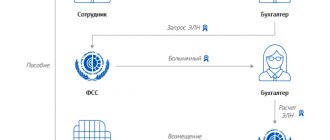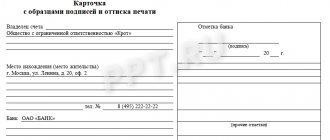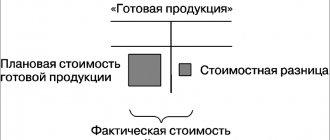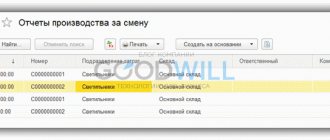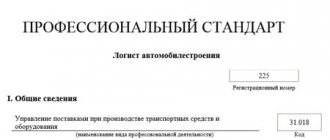Issues discussed in the material:
- What is an electronic signature
- How to create a simple email signature
- How to get a non-qualified digital signature for free
- What are the benefits of a qualified digital signature?
The modern world strives to save resources of time and effort, having rapidly developing technologies in its arsenal. For this reason, even such serious things as document flow are moving from traditional forms to convenient electronic ones. However, the importance of the certifying bond has not been canceled; this need was realized in electronic signature. Our article will introduce you to this invention and tell you how to create an electronic signature yourself.
What is meant by electronic signature
An electronic signature is not a material object (such as a regular seal or facsimile), but a digital requisite of documentation that confirms that the digital signature belongs to its owner. In addition, the digital signature records the state of the data in the document (whether there are changes or not) from the moment it was signed.
The logical abbreviation for an electronic signature is ED, but a very outdated version is also in use - EDS (electronic digital signature). This spelling more unifies the subject, for example, when you need to create a query in a search engine - while “EP” can mean either an electric stove or a passenger electric locomotive.
There are 3 main types of electronic signature:
- Simple digital signature. It is widespread in everyday life; many people use it almost every day. This refers, for example, to confirmation of a payment when it is made online using a bank card. To do this, you need to enter a numeric code sent in a message to the phone number associated with the card you are using.
- Unqualified digital signature. It is not used in everyday life, but in electronic documents, for example, sent to various government agencies. It can be created through a certification center; the level of security will be limited.
- A qualified digital signature for an individual is a full-fledged analogue of his personal signature. It can be used to certify documents. A legal entity can create such a confirmation form and replace its seal with it. Using EDS, you can quickly and conveniently send documentation to various authorities without physical presence.
Top 3 articles that will be useful to every manager:
- Accounting services for companies: all the subtleties and nuances
- What to choose LLC or individual entrepreneur: pros and cons of different forms of ownership
- How to open a current account for an individual entrepreneur: choosing the best bank
EDS - what is it and who needs it
This is a digital analogue of a person’s signature - an electronic key.
Monitoring the integrity of a document, protecting it from forgery and modification, as well as confirming authorship are all functions of a signature. A form signed with an electronic signature has the same legal force as a traditional paper version. Digital details are obtained using cryptographic transformation of information. Advantages of digital signature:
- fast delivery of documents;
- the ability to automate the processing of necessary files;
- reduction of preparation and dispatch costs.
The scope of application of EDS is quite extensive: applying to state and municipal authorities (for example, the State Services website contains a catalog of services), participating in online auctions and receiving other commercial orders, tax reporting, filing claims in court. An electronic digital signature is also used when signing applications and letters by agreement with counterparties. An electronic signature for legal entities greatly simplifies document management.
How to create an electronic signature yourself
A personal electronic signature can be created in a standard Microsoft Office document (in particular, Word). The algorithm for constructing a signature will be as follows:
- Place the cursor at the place in the document where the certification should be.
- From the Insert menu, select Microsoft Office Signature Line.
- A dialog box will open. Fill in the required fields. Click OK.
- The signature has been prepared and will look something like this:
You can create an electronic signature file in another way – through the “File” menu. To do this, you need to execute the following sequence of commands: File/Information/Protect document/Add digital signature. In the dialog box that opens, fill in the required fields similar to the example above.
Note that the authenticity of the signature that you decided to create in this way will be difficult to verify. For this reason, they often turn to special tools, such as Karma software.
How to create a non-qualified electronic signature for an individual for free
A non-qualified digital signature is suitable for documents that would not require a seal in their paper form. These include:
- tax returns;
- other sections of accounting documentation;
- certain types of contracts.
Such a signature allows the certificate to be from a non-accredited certification center, where the digital signature can be created.
To resolve tax issues, it is possible to issue a separate (enhanced) non-qualified digital signature. How to create an electronic signature in a taxpayer’s personal account? You will need to do the following:
- Open the official website of the Federal Tax Service.
- Enter your login and password (if you don’t have them, you should get them from the tax service, or log in through the gosuslugi.ru portal).
- Find the “Profile” section, in which select “Obtain a key certificate...”.
- Submit a corresponding request.
By completing these steps, you will receive your enhanced non-qualified electronic signature key in just a few minutes.
Benefits of creating a qualified electronic signature
What do qualified and unqualified digital signatures have in common?
- They make it possible to track changes in documents after signing.
- They have a certain level of security thanks to electronic keys.
- If any of these two types of signature is used, the document will be equivalent to a paper one.
Qualified digital signature is the most common and is actively used by both organizations and individual entrepreneurs. What are its advantages over other types - simple (PEP) and unqualified (NEP) electronic signature?
A qualified electronic signature (QES) cannot be called the most accessible, but ease of obtaining does not always determine comfort and reliability in use. The most accessible of all is a simple electronic signature, which works through a system of passwords, codes and other mechanisms to confirm the user’s identity. The login-password scheme is most often used; one-time passwords are used somewhat less frequently. PEP allows you to identify the person who signs the document, but does not make it possible to track subsequent changes in it.
The scope of activity of the PEP is also very limited - it can be useful when contacting government agencies, a private person or local government. However, when applying to government agencies, a document with such a signature will not be equal in strength to a paper one.
If you have a broader list of business activities, it is better to obtain a different type of digital signature, choosing between qualified and unqualified forms.
Both of these types of signatures work through cryptographic transformation of information and allow both to establish the identity of the signer and to control subsequent changes to the document. They are protected by two keys: a private one (the token is stored on a special device) and an open one, which is available to others to verify the signature.
What are the differences between qualified and unqualified digital signature? First of all, they have different procedures for obtaining a certificate. This is an important aspect that determines the functionality of the signature.
An unqualified digital signature can be created on the basis of certificates from non-accredited centers. Now there are technologies that do not imply a certificate at all - a signature obtained with their help will also be applicable (if all legal requirements are met). Non-qualified digital signature is suitable for many business relationships. The exception is situations when a regulatory act or preliminary agreement stipulates otherwise.
If you create a qualified digital signature, it will allow you to resolve issues of the maximum range of business relations, including government information systems or electronic platforms. A document with such a signature is equivalent to its paper counterpart.
A certificate for a qualified electronic signature is issued only by a certification center accredited by the Ministry of Telecom and Mass Communications of the Russian Federation. EDS cryptographic protection tools of this type (software and hardware, or token) are certified by the FSB of Russia.
A qualified digital signature, with its wide application possibilities, allows you to:
- establish the identity of the signatory;
- record and track changes in the document where such digital signature was affixed;
- provide maximum protection for the signature itself and the owner’s personal information.
Which digital signature is best for an individual?
Changes in legislation that occurred in 2013 delimited the scope of application of digital identifiers. In accordance with this, in the modern legal environment, an individual can make several types of digital signature for personal use.
- Qualified . This type of digital signature has full legal force and is used as a replacement for the owner’s handwritten autograph. This format of digital identifiers can be used in courts and other government agencies.
- Unskilled/unskilled reinforced . This type allows you to verify the authorship of the file and the absence of adjustments in it. It has legal significance in case of additional agreements between the parties on the rules for using this digital signature.
- Simple . It is included in the file itself and makes it possible to confirm the fact of its authorship. It has no legal significance without compliance with legislative restrictions on its use and additional agreements between the parties on the rules for the use and recognition of this digital signature. Does not guarantee the immutability of the file and is not allowed for use in cases related to state secrets.
How to create a qualified electronic signature
A qualified digital signature certificate is a confirmation of its authenticity; you can create it using the resources of the certification center.
The certificate contains the following data: unique number, last name, first name and patronymic of the owner, validity period. If the owner of the certificate is an organization, its address will be indicated.
In addition, the key with which the CEP can be verified, the exact names of its means, and the address of the certification center (accredited) are indicated. Restrictions on the use of the certificate (if any) may be noted.
To have the right to issue electronic signature certificates, the certification center must not only be accredited, but also have the means for creating digital signatures approved by security services.
Many users are interested in how to create a qualified electronic signature online. Unfortunately this is not possible. Since this digital signature has maximum security, it is necessary to make a personal visit to the certification center. There, the client will need to present his passport and fill out an application using a special form. A representative of a legal entity must have with him a package of constituent documents.
If you need to create a personal electronic signature certificate to participate in electronic trading, you must take with you an extract from the Unified State Register of Legal Entities or Unified State Register of Individual Entrepreneurs (for legal entities and individual entrepreneurs, respectively), which should not be older than six months.
All that remains to be attached to this set of documents is SNILS and a power of attorney to receive an electronic digital signature (for cases when a representative will receive it instead of you).
It will take about two days to produce your electronic signature (this parameter may differ in different certification centers). When ready, you will be provided with an electronic signature key (a special sequence of characters) and a key to verify this data.
In addition to how to create a qualified digital signature, you need to know how to use it correctly. First of all, use this signature only in those areas that are presented in the attached certificate. Take care of the confidentiality of your key - here the employees of the certification center will help you with advice.
If the confidentiality of the digital signature key has been lost, you must immediately notify the certification center, as well as all parties to the document flow in which this signature was used.
A signature cannot be used if its certificate has been suspended or revoked. If you have questions or difficulties, it is better to contact your certification center.
Digital signature for public services for individuals
To use the State Services website, individuals can receive both a simple and qualified digital signature. In the first case, the taxpayer has partial access to the portal functionality. The use of a simple digital signature (using SNILS number and passport data) allows you to view personal information (for example, debts on fines). After checking with the databases of the Pension Fund and the Federal Migration Service and confirming them, the user has access to transactions with a pension account and registration with government agencies.
The portal client can expand the list of functions available to him by ordering an identity confirmation code from the MFC (issued based on SNILS and civil passport data). Having the signature of a verified user, the taxpayer has the opportunity to register a car, issue a foreign passport and use other services available only to verified users.
Using a qualified electronic signature, an individual can gain access to such functions of State Services as receiving extracts, certificates, etc., sending tax returns in digital format, paying state duties and fines, etc.
- CEP (EDS) + USB storage device
2 900 ₽
3400
https://online-kassa.ru/kupit/kep-etsp-plyus-usb-nositel/
OrderMore detailsIn stock
- Enhanced Qualified Electronic Signature
1 review
2 900 ₽
2900
https://online-kassa.ru/kupit/usilennaya-kvalifitsirovannaya-elektronnaya-podpis/
OrderMore detailsIn stock
- Electronic signature for individuals
2 900 ₽
2900
https://online-kassa.ru/kupit/elektronnaya-podpis-dlya-fizicheskih-lits/
OrderMore detailsIn stock
How much will it cost to create an electronic signature?
Before creating an electronic digital signature, do not forget to check with the employees of the certification center what the cost of this service is. The pricing policy in this market sector is very heterogeneous.
The most affordable offers start from 1000 rubles. If an individual entrepreneur or legal entity needs to create an electronic digital signature, the price will be approximately 2-3 times higher. Such a service will cost the most at certification centers in Moscow and the Moscow region: creating an electronic signature key with recording on a special medium (token) will cost approximately 12–15 thousand rubles.
However, take a closer look at the offer before making your choice.
For example, higher cost plans typically include initial hardware setup and consulting support. In addition, it may include a CryptoPro CSP license, a program that provides access to the widest range of opportunities when working with digital signatures in Russia. Get a savings estimate
Digital signature from a technical point of view
If you look at an electronic signature from a technical perspective, you will find that it is essentially a special sequence of characters encrypted in a document. Moreover, the signature can be located either inside an electronic file or as a separate application.
By law, there are three types of digital signatures:
- Simple . In this case, it serves a completely obvious and banal purpose: proof that the document was written and transmitted by a certain person;
- Reinforced unskilled . In addition to confirming authorship, it indicates that no edits or changes were made to the already written document;
- Reinforced qualified . This is the most complex type of signature, which is issued in special Certification Centers that have permission from the Ministry of Communications of the Russian Federation. These centers are located in almost all major cities of the country and their list can be easily found on the official website of the Ministry of Telecom and Mass Communications. We can say that this signature is of official origin and only it is suitable for certifying documents sent to government bodies, such as the Federal Tax Service and various extra-budgetary funds.
For your information . When registering an electronic digital signature at an accredited Certification Center, the user receives two types of keys: private and public. The owner must transfer the public key to all organizations and individuals with whom digital documents will be exchanged, and its analogue is given for storage to the Certification Center (thus ensuring the safety of the key and its inaccessibility to intruders). The private key remains in the hands of the owner and serves to confirm documents and ensure that they are sent to recipients.
The last third type of signature is precisely the most correct from the point of view of legal practice. An enhanced qualified digital signature completely replaces the handwritten counterpart and even the organization’s seal. This is what is required when sending documentary reports to the tax authorities, pension fund and other government agencies. However, the value of other types of electronic signatures should not be diminished - they are quite suitable for certifying various business transactions, if this is provided for by the internal regulations of the organization.
Important! Any, even the simplest digital electronic signature, is practically impossible to fake. To carry out the forgery, it would be necessary to perform a huge number of cumbersome calculations, which, even at current computer speeds, would take a lot of time. That is why, despite the fact that manufacturers offer insurance, it is not at all advisable to do so.



